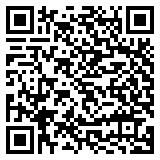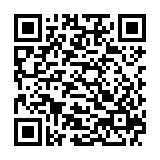Sports and language might seem like two separate worlds, but they share striking similarities. Both require communication, strategy, and a deep understanding of context. Whether it’s a football team executing a play or a referee signaling a call, sports rely on a complex system of verbal and non-verbal communication that transcends linguistic barriers.
The Role of Communication in Sports
Athletes, coaches, and referees use a mix of spoken words, signals, and gestures to coordinate actions and strategies. Just like in spoken languages, these forms of communication evolve over time, adapting to new rules and playing styles.
Some examples include:
- Hand signals in basketball: Referees use standardized gestures to communicate fouls, violations, and points.
- Play-calling in American football: Teams use coded language to disguise strategies from opponents.
- Tactical discussions in football (soccer): Players communicate in real-time using key phrases and body language to adjust tactics on the field.
The Linguistics of Sports Terminology
Sports have created their own linguistic worlds, complete with specialized jargon, metaphors, and expressions that extend beyond the game. Terms like “home run,” “slam dunk,” or “offside” have become part of everyday language, often used metaphorically in business and life.
How Sports Jargon Translates Across Cultures
Not all sports terms translate directly between languages. For example:
- The English phrase “hat trick” (three consecutive goals) is understood in football, but in cricket, it refers to three wickets taken by a bowler in three consecutive deliveries.
- American football’s “touchdown” doesn’t exist in other sports, requiring interpreters to find equivalent terms or explain the concept.
Sports, Language, and Cultural Identity
Different sports are deeply tied to specific cultures, shaping the way language is used and developed within those communities.
For example:
- Baseball in the U.S.: Many American idioms, such as “out of left field” (unexpected) or “step up to the plate” (take responsibility), come from baseball.
- Cricket in England and the Commonwealth: Expressions like “sticky wicket” (a difficult situation) originate from the sport.
- Football (soccer) worldwide: The term “football” itself varies, with “soccer” being used mainly in the U.S. and Canada.
The Deal with Sports Interpreting
Sports interpreting is a niche but essential field, especially with the rise of new trends in the trade. International sporting events like the Olympics, FIFA World Cup, and NBA games require skilled interpreters to bridge communication gaps between athletes, coaches, and the media.
1. Interpreting for Athletes and Coaches
Multilingual teams rely on interpreters to translate instructions, game strategies, and press conferences accurately. A misunderstanding can lead to miscommunication and impact performance.
2. Translating Sports Commentary and Journalism
Sports journalists and commentators often use idioms and cultural references that don’t directly translate. Interpreters must adapt phrases to ensure clarity for international audiences.
3. Facilitating Multinational Events
From press conferences to doping control interviews, sports interpreters ensure smooth communication between organizations, officials, and athletes from diverse backgrounds.
Preserving the Art of Sports Language Interpreting
Sports and language are both powerful tools that unite people across cultures. Interpreters who specialize in sports need to understand not just words but the cultural and contextual nuances that shape communication on and off the field. Whether breaking down a coach’s strategy or translating a post-game interview, their role is as crucial as the athletes themselves in making international sports accessible to all.
So next time you watch a game, remember—there’s more being interpreted than just the final score!





0 Comments